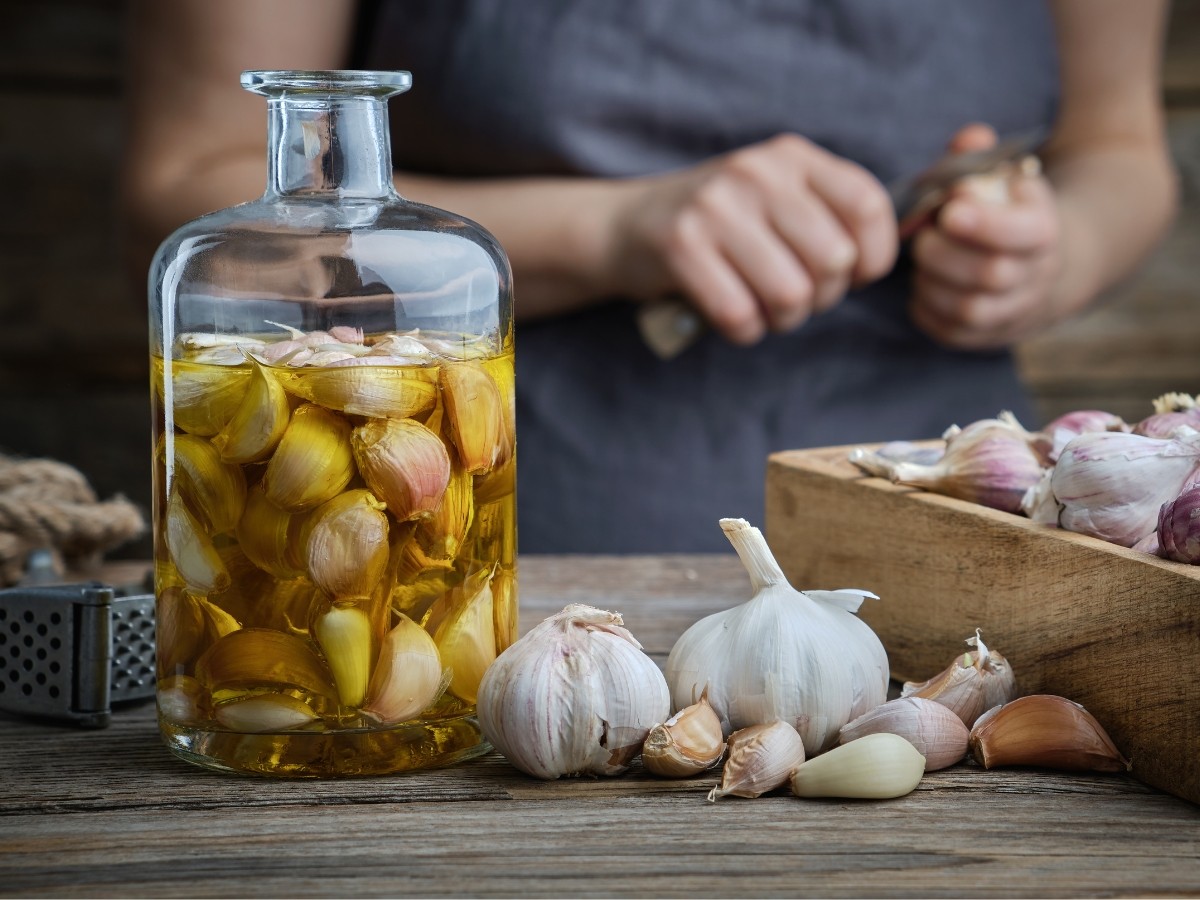
Garlic- Mother Nature’s Antibiotic
The History of Garlic
Garlic has been an essential part of the human diet for centuries, where it was used for both food and medicinal purposes. Over the years, garlic was even named the "Russian penicillin" and "natural antibiotic" due to its healing properties.
Some of these health benefits include cardiovascular protection, lowering of blood pressure, antioxidant, anti-inflammatory and antibiotic effects, which is why garlic has stood the test of time as a staple ingredient, especially for immunity and to fight infection.
Traditionally, the use of garlic was most prevalent in Ayurvedic Medicine, Chinese Medicine, Ancient Egyptian Medicine and Siberian Medicine, before becoming widely used in Western Herbal Medicine.
How did different cultures traditionally use garlic
Ayurvedic Medicine
A manuscript, known as the Bower manuscript, was found in an Ancient Indian tomb and dated back to 300AD. This manuscript highlighted the use of garlic for treating infection, infestations, worms, weakness, fatigue and digestive disturbances in India. The Charaka-Samhita, which is the leading surviving medical text, revealed garlic was also recommended to treat heart disease and arthritis, more than 2000 years ago in Ayurvedic medicine.
Traditional Chinese Medicine
Garlic was a staple in the Chinese diet around 2000BC and was primarily used to aid respiration during or after respiratory infection, help digestion, relive diarrhoea and treat worm infestation. Garlic was also used for sadness/depression, fatigue headache and insomnia.
Ancient Egyptian Medicine
In Ancient Egypt, the upper class would feed garlic to their slaves to increase their strength and work capacity. The Egyptian crypts are the oldest visible inscriptions for the existence of garlic, dating back to 3700BC. The Ebers Papyrus, which is the oldest medical papyri of Ancient Egypt, mentioned garlic as healing as many as 32 illnesses. In addition to this, Tutankhamen was buried with garlic in his pyramid as this was thought to protect his soul and wealth.
Western Herbal Medicine
In 1548, garlic was introduced into Great Britain, from the coasts of the Mediterranean Sea. Not long after, it was being commonly used in Western Herbal Medicine to treat gastric infections, common colds, fever and diarrhoea and was reported to prolong the life of many sick people. In 1858, the antibacterial and antiseptic properties of garlic were discovered and were thought to have reduces cases of cholera, typhoid fever, diphtheria, the 'Spanish fever' and the American influenza epidemic.
It is fascinating that a multitude of ancient cultures had discovered the health benefits of garlic and were using this ingredient for a similar purpose before ever crossing paths. In more recent times, garlic has been extensively studied and the therapeutic uses that traditional medicine had discovered long before have now been proven scientifically. These therapeutic effects are thanks to the sulphur compounds found in garlic… Allicin and its precursor, Alliin.
How were Allicin and Allin discovered and how do they effect immunity and infection?
llicin, the most biologically active compound of garlic, was discovered in 1944 by Cavallito and Bailey. It was also discovered that Allicin isn't present in raw garlic but is produced by the enzymatic reaction between allinase and alliin. Allinase is activated by crushing or cutting the cloves.
Several studies have showed the antibiotic activity of allicin as well as its ability to inhibit the growth of certain bacteria such as Helicobacter pylori. Further studies also confirmed the immunomodulation effect of garlic and its active compounds, which are able to modulate cytokine production and stimulate an anti-inflammatory response.
The consumption of alliin and allicin can also prevent the attack of viruses on the body. This was seen in a randomised control trial which showed the treatment group receiving an allicin- containing garlic supplement, having significantly less colds than the placebo group.
Take home message
The extensive health benefits of garlic, especially its antibiotic and immune effects, show why garlic has been a prevalent food and medicinal supplement for thousands of years, and utilised in many different cultures and traditional systems of medicine. If you find yourself battling a cold or flu, try adding in one of our garlic supplements into your diet!
References
1. Petrovska BB, Cekovska S. Extracts from the history and medical properties of garlic. Pharmacogn Rev. 2010 Jan;4(7):106-10
2. Ansary J, Forbes-Hernández TY, Gil E, Cianciosi D, Zhang J, Elexpuru-Zabaleta M, Simal-Gandara J, Giampieri F, Battino M. Potential Health Benefit of Garlic Based on Human Intervention Studies: A Brief Overview. Antioxidants (Basel). 2020 Jul 15;9(7):619
3. Richard S. Rivlin. Historical Perspective on the Use of Garlic. American Society for Nutritional Sciences. 2001. 131: 951-954.
4. Rahman, M. S. (2007). Allicin and Other Functional Active Components in Garlic: Health Benefits and Bioavailability. International Journal of Food Properties, 10(2), 245–268.
Related Posts
By accepting you will be accessing a service provided by a third-party external to https://www.lipa.com.au/








